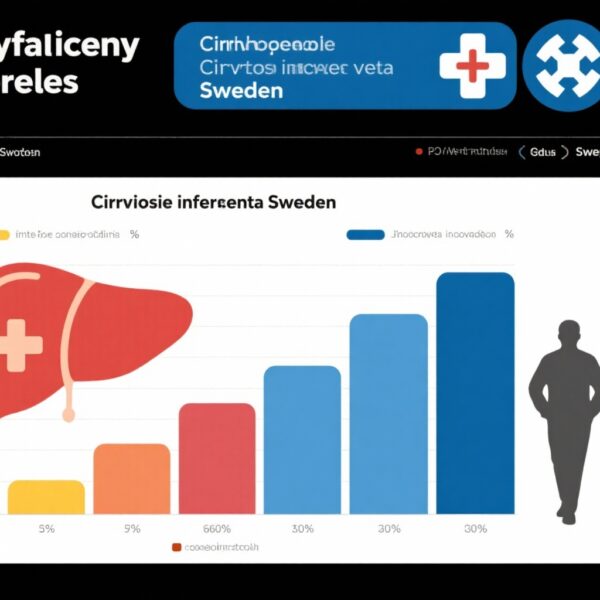Highlight
– A first-in-human, open-label phase 1 study tested IL-10–expressing anti-CD19 CAR T cells in relapsed or refractory B-cell acute lymphoblastic leukaemia (B-ALL) to reduce inflammatory toxicity while maintaining anti-leukaemic activity.
– The intervention was feasible and produced early signals of clinical activity with potentially lower rates or severity of cytokine release syndrome (CRS) and neurotoxicity (ICANS) versus historical expectations, but the trial was small and non-randomised.
– Key open questions include durability of remissions, infection risk due to IL-10 immunomodulation, and whether the observed safety profile will be replicated in larger, controlled trials.
Background and Unmet Need
B-cell acute lymphoblastic leukaemia (B-ALL) in children and adults can be highly responsive to CD19-directed chimeric antigen receptor (CAR) T-cell therapies, which have transformed outcomes for many patients with relapsed or refractory disease. Approved CD19 CAR T-cell products (for example, tisagenlecleucel and axicabtagene ciloleucel in other B-cell malignancies) can induce high remission rates, but their use is limited by treatment-related toxicities, chiefly cytokine release syndrome (CRS) and immune effector cell-associated neurotoxicity syndrome (ICANS).
CRS and ICANS are inflammatory toxicities driven by high systemic cytokine levels (for example IL‑6, IFN‑γ) and endothelial activation. Management relies on IL‑6 blockade (tocilizumab), corticosteroids, and supportive care, but these interventions can complicate therapy, incur morbidity, and occasionally blunt T-cell function.
Engineering CAR T cells to modulate their own inflammatory milieu (so-called “armored” CARs) is an emerging strategy to enhance the therapeutic index. Interleukin‑10 (IL‑10) is a pleiotropic anti‑inflammatory cytokine that suppresses pro‑inflammatory cytokine production and can limit immune-mediated tissue damage while preserving certain cytotoxic functions in some contexts. Preclinical data suggested that local IL‑10 expression might reduce systemic inflammatory toxicity without abrogating anti-tumour activity, prompting translation to a first-in-human phase 1 study.
Study Design
The study by Xu and colleagues (Lancet Haematology, 2025) is an open‑label, single‑arm phase 1 trial of IL‑10–expressing anti‑CD19 CAR T cells in patients with relapsed or refractory B-ALL. Key design features included autologous T-cell collection, lentiviral transduction to introduce a CD19 CAR construct co‑expressing IL‑10, lymphodepleting chemotherapy prior to infusion, and dose escalation or a predefined dose cohort for safety evaluation. Primary endpoints were safety and feasibility; secondary endpoints included response rates, duration of response, pharmacokinetics/persistence of CAR T cells, cytokine profiles, and exploratory biomarkers of inflammation and immune function.
As a phase 1 safety study with a single-arm design, the trial aimed to characterise adverse events—particularly CRS and neurotoxicity—and to identify a recommended dose for further testing. There was no randomised comparator; results were interpreted against historical expectations for CD19 CAR T-cell toxicity and efficacy in similar patient populations.
Key Results and Interpretation
Overall feasibility and manufacture: The trial demonstrated that autologous IL‑10–expressing CAR T cells could be manufactured and infused in patients with relapsed/refractory B‑ALL, confirming the technical feasibility of this armored construct in a clinical-grade process.
Safety signals: The investigators reported favourable safety signals compared with typical historical rates of severe CRS and ICANS seen with unmodified CD19 CAR T cells. Specifically, the IL‑10–armored CAR T-cell therapy appeared to be associated with lower severity of systemic inflammatory responses in many patients, with fewer high‑grade CRS events and less frequent severe neurotoxicity. These observations were supported by serial cytokine measurements demonstrating attenuated peaks of key pro-inflammatory mediators in several participants. Importantly, standard management protocols (including tocilizumab and steroids when indicated) remained available and were used as per institutional guidelines.
Anti‑leukaemic activity: Despite the anti-inflammatory modification, the products induced remissions in a proportion of treated patients, showing that IL‑10 co‑expression did not universally abrogate cytotoxic efficacy. Early response assessments suggested meaningful clinical activity consistent with the mechanism of CD19-directed cytotoxicity. The data indicate that local or CAR-associated IL‑10 expression may blunt pathological inflammation while permitting target cell killing.
CAR T-cell persistence and pharmacodynamics: The study reported measurable persistence of CAR T cells in peripheral blood in many patients, with some correlation between cellular persistence and clinical response. Cytokine profiling showed a distinct pattern from historical controls—lower peaks of IL‑6 and IFN‑γ in several cases—consistent with an anti‑inflammatory effect. The authors explored biomarkers of endothelial activation and blood–brain barrier perturbation relevant to ICANS, with signals suggesting potentially reduced endothelial injury, although sample sizes were small.
Infectious risk and immune suppression: Theoretically, systemic or local expression of IL‑10 could increase infection risk by suppressing innate and adaptive inflammatory responses. The authors monitored infections and reported no immediately excessive infectious complications attributable to the IL‑10 construct in the short follow-up, but acknowledged that longer follow-up and larger cohorts are needed to exclude a clinically important increase in opportunistic infections or impaired immune reconstitution.
Limitations of the results: As a non-randomised phase 1 trial with a small sample size, the study was not powered to demonstrate superiority over standard CAR T approaches. Comparisons to historic controls are subject to selection bias, differences in supportive care, and variable grading/reporting across centres. Confidence in efficacy and safety signals requires cautious interpretation and prospective confirmation.
Clinical and Mechanistic Plausibility
The strategy of co‑expressing IL‑10 in CAR T cells is mechanistically plausible. IL‑10 dampens macrophage and dendritic cell production of pro‑inflammatory cytokines and can limit cytokine-driven endothelial activation implicated in severe CRS and ICANS. At the same time, certain cytotoxic T-cell functions can be preserved in environments with regulated IL‑10 signalling, particularly when IL‑10 expression is localised to the CAR T-cell microenvironment rather than systemically administered. Preclinical models of armored CARs expressing immunomodulatory cytokines have shown improved safety or efficacy in select contexts, supporting translation into humans.
Expert Commentary and Context
Armored CAR T cells are an active area of translational research; investigators have explored co-expression of cytokines (IL‑12, IL‑18), checkpoint‑blocking scFvs, and dominant-negative receptors to enhance efficacy or safety. The IL‑10 approach aims to tilt the balance toward controlling potentially life‑threatening inflammatory toxicity without losing anti-tumour potency.
Key experts caution that while early safety signals are encouraging, several issues need addressing before wide clinical adoption: reproducibility across manufacturing platforms and centres; the risk–benefit trade-off in diverse patient populations (pediatrics vs adults, disease burden differences); interactions with standard cytokine-directed rescue therapies like tocilizumab and corticosteroids; and long‑term immune competence, especially with repeated exposures or in patients who subsequently receive hematopoietic stem cell transplantation.
Practical Implications and Next Steps
The trial provides a proof of concept that engineered anti‑inflammatory modifications to CAR T cells can be delivered safely and may reduce the severity of inflammatory toxicities. Next steps should include:
– Larger, multi-centre phase 2 studies with pre‑specified efficacy and safety endpoints to quantify clinical benefit and risk.
– Randomised or propensity‑matched comparative studies versus standard CD19 CAR T products (or well-characterised historical cohorts) to control for confounding.
– Longer follow-up focused on durability of remissions, late infections, immune reconstitution, and secondary malignancies.
– Mechanistic correlative studies including single-cell profiling, tumour microenvironment assays, and endothelial/blood–brain barrier biomarkers to better understand how IL‑10 expression modifies toxicity pathways.
Limitations and Unresolved Questions
– Small sample size and single-arm design limit interpretation of efficacy and safety; statistical comparisons to historical controls are imperfect.
– The balance between anti‑inflammatory effect and host defence is delicate; larger datasets are needed to assess infectious complications and immunologic recovery.
– It remains unclear whether IL‑10 expression provides benefit across all CAR T manufacturing platforms and dosing strategies, or whether benefit is restricted to specific constructs, schedules, or patient subgroups.
– Cost, manufacturing complexity, and regulatory pathways for modified constructs will influence scalability and access.
Conclusion
The phase 1 study of IL‑10–expressing anti‑CD19 CAR T cells represents an innovative approach to improving the therapeutic index of CAR T-cell therapy in relapsed or refractory B-ALL. Early human data indicate feasibility, preserved anti‑leukaemic activity, and potentially reduced inflammatory toxicity compared with historical expectations. However, these encouraging results must be confirmed in larger, controlled trials with longer follow-up to define the true magnitude of benefit, assess infectious and long‑term risks, and determine how best to integrate this strategy into clinical practice.
Funding and Trial Registration
The Lancet Haematology article includes funding and trial registration details; readers should consult the original publication (Xu et al., Lancet Haematol. 2025 Nov;12(11):e898-e907) for full information on sponsors, manufacturing partners, and clinicaltrials.gov identifiers.
Selected References
– Xu Q, Guo Y, Gao M, et al. IL-10-expressing, anti-CD19 CAR T cells for patients with relapsed or refractory B-cell acute lymphoblastic leukaemia: an open-label, single-arm, phase 1 study. Lancet Haematol. 2025 Nov;12(11):e898-e907. doi:10.1016/S2352-3026(25)00253-4.
– Maude SL, Frey N, Shaw PA, et al. Chimeric antigen receptor T cells for sustained remissions in leukaemia. N Engl J Med. 2014;371(16):1507–1517.
– Lee DW, Santomasso BD, Locke FL, et al. ASTCT consensus grading for cytokine release syndrome and neurologic toxicity associated with immune effector cells. Biol Blood Marrow Transplant. 2019;25(4):625–638.
– Moore KW, de Waal Malefyt R, Coffman RL, O’Garra A. Interleukin-10 and the interleukin-10 receptor. Annu Rev Immunol. 2001;19:683–765.
– Saraiva M, O’Garra A. The regulation of IL-10 production by immune cells. Nat Rev Immunol. 2010;10(3):170–181.
– Newick K, Moon E, Albelda SM. Chimeric antigen receptor T-cell therapy for solid tumors. Mol Ther Oncolytics. 2016;3:16006.
– Neelapu SS, Locke FL, Bartlett NL, et al. Axicabtagene ciloleucel CAR T‑cell therapy in refractory large B‑cell lymphoma. N Engl J Med. 2017;377(26):2531–2544.
Note: For full trial details, numerical outcomes, adverse event rates, and regulatory declarations, consult the original Lancet Haematology publication cited above.



